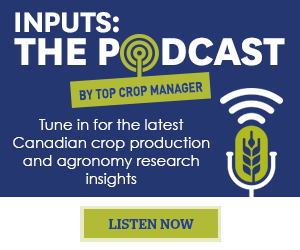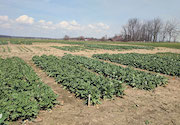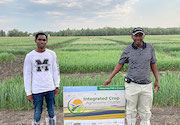| |
| |
 |
 |
| |
 |
|
@{mv_date_MMM d, yyyy}@ |
|
| |
 Census data indicate that trends identified in previous cycles, such as consolidation and aging of farm operators, continued in 2021. At the same time, the industry is adapting and modernizing.
» Read more...
Census data indicate that trends identified in previous cycles, such as consolidation and aging of farm operators, continued in 2021. At the same time, the industry is adapting and modernizing.
» Read more...
The Canadian Agri-Food Automation and Intelligence Network has launched a $5 million call for funding focused on encouraging the expansion of a national network of smart farms.
» Read more...
Agriculture and Agri-Food Canada will invest up to $734,806 to help five organizations increase the participation of under-represented groups in the Canadian agriculture and agri-food industry.
» Read more...
|
| |
 |
 |
| |
|
| |

When do you plant winter wheat? There may be an ideal date that comes to mind based on where you farm, but the reality is there are plenty of factors that affect when you actually get the crop in the ground, like the previous crop in rotation, weather, soil conditions, and more.
This episode of Inputs features Emma Dieleman, graduate student at the University of Guelph’s Ridgetown Campus conducting her research under the supervision of Drs. Dave Hooker and Josh Nasielski. She is looking at the effects of different winter wheat planting dates and the use of harvest desiccants on soybeans when they precede winter wheat in rotation, and discusses why this research is timely, her results so far, and what she’s seen from this year’s winter wheat crop already.
» Listen now |
| |
|
| |
 A new study suggests producers should plant winter canola in the first two weeks of September to minimize winterkill and maximize yield and oil quality. The study, led by AAFC’s Eric Page, evaluated five different seeding dates ranging from early September to late October. There’s just one winter canola variety available in Canada and, since its nationwide registration in April 2020, Page says demand has outstripped supply.
» Learn more...
A new study suggests producers should plant winter canola in the first two weeks of September to minimize winterkill and maximize yield and oil quality. The study, led by AAFC’s Eric Page, evaluated five different seeding dates ranging from early September to late October. There’s just one winter canola variety available in Canada and, since its nationwide registration in April 2020, Page says demand has outstripped supply.
» Learn more... |
| |
 Fusarium head blight is the most serious fungal disease affecting cereals in Western Canada. Fungicide can reduce yield and grade losses as a result of Fusarium-damaged kernels and mycotoxin infection. However, research has shown that fungicide does not always provide a tangible benefit. University of Manitoba researchers are leading the development of a new risk model and a FHB/FDK/DON risk-mapping tool.
» Learn more...
Fusarium head blight is the most serious fungal disease affecting cereals in Western Canada. Fungicide can reduce yield and grade losses as a result of Fusarium-damaged kernels and mycotoxin infection. However, research has shown that fungicide does not always provide a tangible benefit. University of Manitoba researchers are leading the development of a new risk model and a FHB/FDK/DON risk-mapping tool.
» Learn more... |
| |
|
| |
|
|
| |
| |








